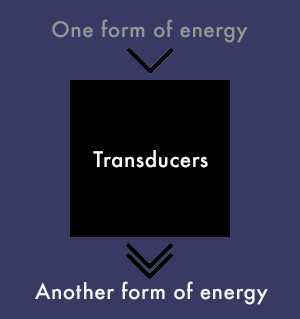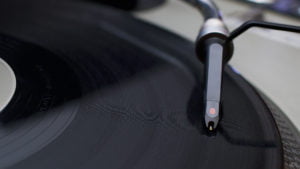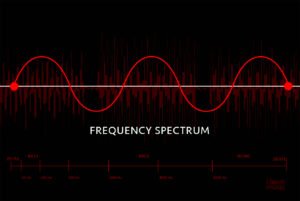The science behind turntables and the needle is just wonderful! Vibrations created by the turntable needle running on the record pass through the stylus, are conserved and then converted into electric energy, which is pushed out as audio that we can hear via our speakers.
Let’s take an in-depth dive into phonographic cartridges, phono-cartridges, stylus, pickups or simply put “the turntable needle”.
Before you proceed, you may also want to check out Parts of a Turntable and the kinds of turntables to understand the total mechanics of turntables.
The Basics of a Turntable:
Without getting too technical, let us understand the basic workings of turntables and the needle.
A turntable is a music device that uses ‘Vinyl Records’ as music media. The Record is placed on a spinning disc that is motorised and spins at a specific speed. Vinyl Records store information in the moulded grooves on their surface as seen below. 
A needle is placed on the spinning vinyl that reads these grooves, converting the resulting vibrations into an electrical signal. The turntable then amplifies this signal and transmits it to a listening device such as a speaker.
In short, the needle is super important for the proper functioning of the turntable.
What is a Turntable Cartridge/Needle?
Turntable cartridges are precise instruments. The turntable cartridge is the actual housing unit that holds together not only the stylus/needle but also all the other parts like the coil, magnet & cantilever.
Most DJs usually refer to the whole cartridge as the needle itself. However, a needle and a cartridge are two separate parts.
To keep things simple let us look at the cartridge as two distinct main parts. The Cartridge itself and the Stylus that is housed in it.
The Cartridge
The Turntable Cartridge is the main housing unit of the needle. It consists of several components like the Stylus or Needle, Cantilever, Magnets, Coils and the body itself.

The Cartridge acts as an electromagnetic transducer * that converts mechanical energy from vibrations into electrical current, which is further used to transmit music from a vinyl record that is placed on a turntable.
The Turntable Needle or Stylus

The needle, better known as the stylus is the part that physically touches the surface of the vinyl record. The needle tracks the grooves and is normally made of a tiny gemstone or polished diamond. We shall discover more needle types below.
The Cantilever
The Cantilever is a rigid metal tube that houses the stylus on one and the magnet & coil on the other end. The size, weight, material and construction of the cantilever affect the sound reproduction quality of the Turntable cartridge.
Suspended via a rubber housing, the cantilever vibrates accurately while the stylus tracks the grooves of the record. These vibrations are transmitted by the cantilever to the magnet and coils that act as a transducer to convert the vibrations to a small current.
This electrical current or phono signal is sent through delicate wires housed in the tonearm to the turntable circuits. This signal is then amplified and finally converted to a sound that can be heard through a loudspeaker.
Now let’s dive into the technical depth of the Types of Turntable Needles & the Cartridges they are housed in:

Stylus Tips
Diamonds are used in needles as they are the hardest material & hence track the ridges of the record even better.
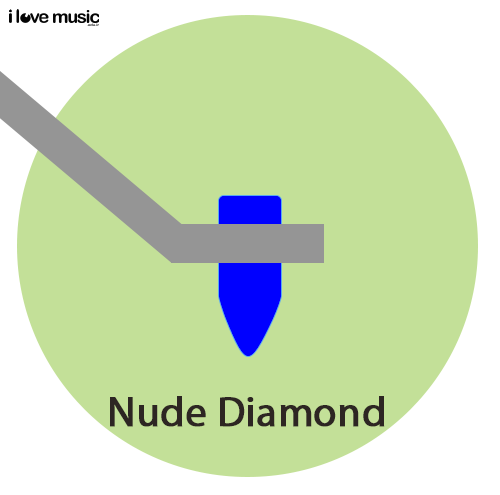
I. Nude Diamond Tip
The entire stylus here is a Diamond, cut with precision into the specific shape as required and bonded directly to the cantilever via a special glue.
This Nude Diamond is the best quality in stylus as it is more durable, has lower mass, can track the grooves more accurately and improves the transient reproduction capability of the Cartridge.
There are several diamond shapes to be found, the most common of which are described below.
II. Diamond Tip
The Needle here as the name suggests has only the tip of the stylus as a diamond, while the rest is a metal shank that attaches to the Cantilever.
Even though the Tip is a diamond, the metal shank attaching it to the cantilever increases the overall mass of the Stylus. This kind of turntable stylus is found in inexpensive hi-fi cartridges.
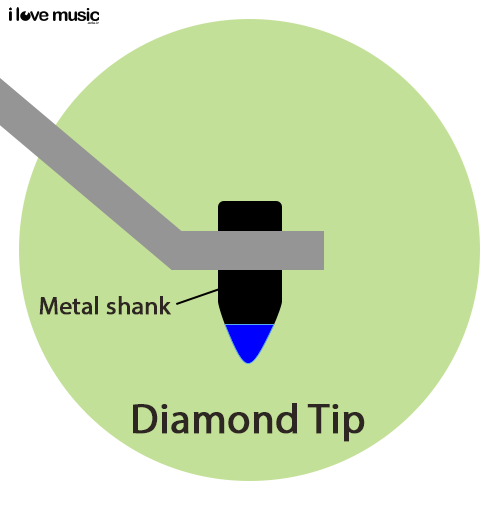
Stylus Shape
The Shape of the stylus tip determines how well it can track the grooves on the record. The 2 best and most common shapes are spherical and elliptical. Lets look at all the different types of Stylus/Needle shapes available, below.
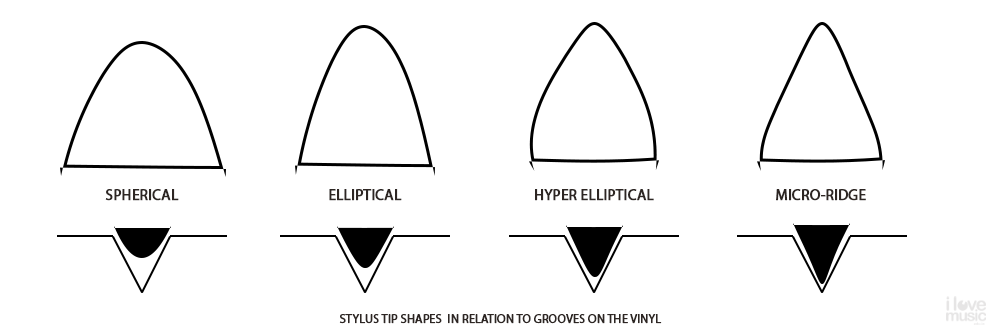
A. Spherical
Spherical tips are the most affordable and the easiest to use. They have the largest surface radius and make the least amount of surface contact. Hence, they are the longest-lasting.
Spherical tip needles are also commonly known as Conical tips.
B. Elliptical
The Elliptical tip shape stylus has a smaller surface radius and larger contact surface. Hence they can track grooves more accurately. This helps read more information from the grooves on the record giving enhanced music quality. These wear out faster and one needs to take time to align them for quality output.
C. Hyper-elliptical
Smaller grooves in the records account for higher frequencies and the hyper-elliptical allows for even better quality sound. They are more elliptical and more precise. These are expensive stylus tips to manufacture and when aligned to precision give precision sound.
D. Micro-ridge
Computer-designed micro ridge tips are the most accurate. They are very close to cutting stylus (the ones used to cut or record a Record). Super expensive to manufacture and super expensive to use.
Magnet & Coil Cartridges:
Based on the Mechanics of the magnet and coil.

a. Moving Magnet Cartridge (MM)
The most common type of turntable cartridge, the moving magnet cartridge has a pair of freely moving magnets that rest on one end of the cantilever with the stylus on the other. As the stylus moves to track the grooves on the record, the magnets move as well, in proximity to fixed coils. The movement of the magnets causes minute but precise changes in the magnetic field releasing a strong signal or current. This strong phono signal is transmitted via the tonearm.
b. Moving Coil Cartridge (MC)
Moving coil cartridges typically don’t have a replaceable stylus and one would need to change the whole cartridge. Here the Magnet is in a fixed position while the coil moves. The Coil is attached directly to the cantilever. It vibrates as the turntable stylus tracks the contours of the record. The moving coil in near proximity to the fixed magnets generates a low Phono Signal. This signal is subsequently boosted by a phono-amp to the desired output.

Cartridge Mounting:
i. Standard Mount
A Standard Mount Cartridge is easily identified by the two screws that hold it in place. The Stand mount also known as “1/2 inch mount” is two screws 1/2 inch apart that mount the cartridge to the shell. 4 small wires connect the cartridge to the tonearm. The Cartridge requires a bit of work to assemble, a bit of hands-on to change the stylus as well and calibration when used with turntables.

ii. P-Mount
The “P” in P mount stands for “Plug”. This Plug type mount is easy to plug in and use as well as change. The P mount has 4 tips at the back of the cartridge that attaches to the tonearm like a plug and kept in place with a single screw. Also known as the T4P mount. Designed to be installed in P-MOUNT tonearms, it comes with a Universal adapter in case you want to use with otherwise.

The Universal Adapters is the adapter used to attach a P-mount turntable needle onto a standard mount shell cartridge.
When is it time to replace the turntable Cartridge?
Clicks and pops are part of the turntable experience, but if your records sound different from what they did earlier, it may be time for a change, so check your stylus. You may require a magnifying glass or even a microscope to check the stylus. Look for bends on the cantilever and cracks or buildup of dirt etc on the needle tip.
One can replace the Stylus or the entire Cartridge in case of damage or wear & tear. The Cartridges are normally built to last and need not be changed as frequently. But the Stylus is quite delicate. The needle has a life of 500 up to 1000 hours of playtime depending on conditions of use and storage. The stylus would need changing to maintain sound quality as well as maintain the integrity of the grooves on the records.
Note: Typically, entry-level turntables use a non-removable cartridge that supports stylus replacements. If the Stylus itself does not come out then what you have can be considered a toy and not an audio device.
What kind of Needle is better for DJ’ing?

We would recommend Dj’s to use Spherical Diamond Tip MM Cartridges. MC Cartridges should only be used by advanced users and audiophiles as they are expensive and may require the entire cartridge to be sent to the manufacturer just to change the stylus.
Most Dj cartridges are similar to the P-Mount type but a bit more refined version called the Integrated Cartridge. These are rugged as it is a single-piece or unibody cartridges with only an interchangeable Stylus.
A Spherical Tip is recommended for DJ’ing. As, when DJs scratch, fast-forward or rewind to set the mix, the needle rubs against the record groove more than it normally would while playing. Here the spherical tip causes less wear and tear to the records. This way both the record and the needle last longer.
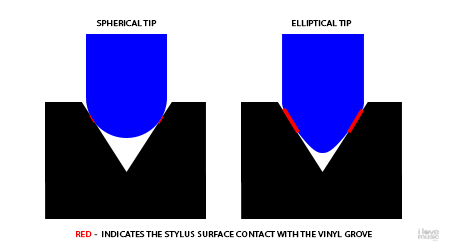
However, some Djs prefer an Elliptical Stylus due to its clarity. The Standard Mount Cartridge is also common among DJs based on ease of availability, cost and ability to customise each part.
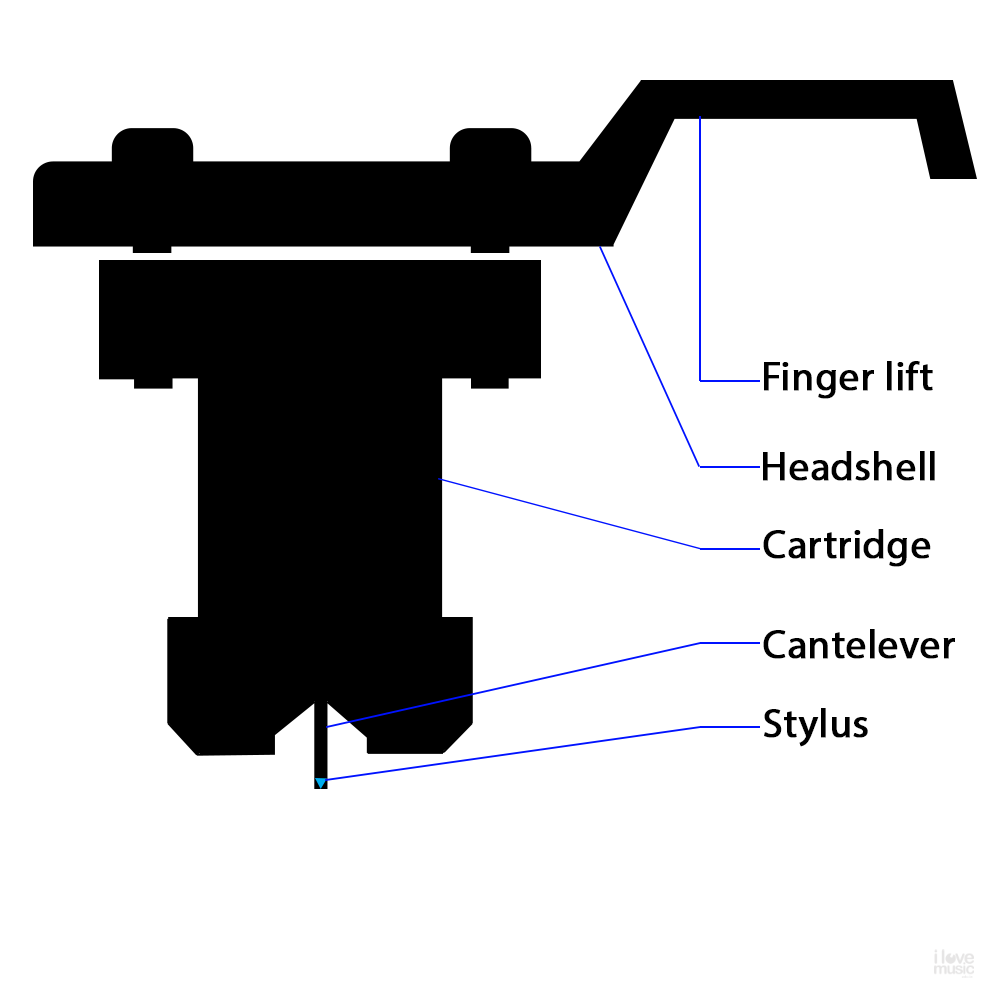
Lifting the needle off the record manually – The Finger Lift
Never touch the cartridge or the stylus when lifting the needle off the record. A small piece of metal or plastic called the tonearm lift or the Finger lift extends out of the turntable cartridge shell. This device is used to lift the tonearm off the record and place it back onto the armrest, locked in place with the tonearm lock.
Put the needle on the record. Be Careful!
The needle is delicate and one needs to be careful when placing the needle on the record. The Tonearm of the turntable has the Cartridge at one end and a counterweight at the other. This counterweight is adjusted to adjust the pressure the stylus has on the record.
If the weight pushes the needle too hard the needle can damage the grooves of the record and also damage the turntable needle itself. The tension of the needle on the groove needs to be just right so that the needle sits perfectly on the grooves to read them accurately.
A little device assists us in placing the needle on the record; as well as lifting it off once the counterweights are set accurately, this is called the Cue Lever.
Push the Cue Lever up, this lifts the tonearm out of the armrest. Now engage The Finger lift to manually set the tonearm into position. Then push down the cue lever. This engages the armrest counterbalance and the tonearm gently falls down to the calibrated position allowing the needle to come into contact with the record.
Only once the needle has been placed on the record should the platter motor be engaged.
DJs would normally not use the cue lever as they quickly change records, time being of the essence, but don’t be fooled with their speed. They are ever so gentle in placing the Turntable Needle on the Record.
Footnotes:
What is Anti-skating on Turntables?
The grooves on the vinyl record have intricate profiles which are read by the turntable stylus. The record plays in a circular motion and the grooves are cut outward to inwards. Therefore the stylus automatically moves circularly towards the centre label of the record. This causes the Stylus face to push inwards eating into the inner wall of the groove.
Anti-skating balances the stylus in the groove compensating the inward force so that the stylus rides un the centre of the record groove.

What is a transducer?
A transducer is an electrical device that converts one form of energy into another form. In general, these devices deal with different types of energies such as mechanical, electrical energy, light energy, chemical energy, thermal energy, acoustic energy, electromagnetic energy, and so on.
Best common examples of transducers are mics, fluorescent bulbs and speakers.
